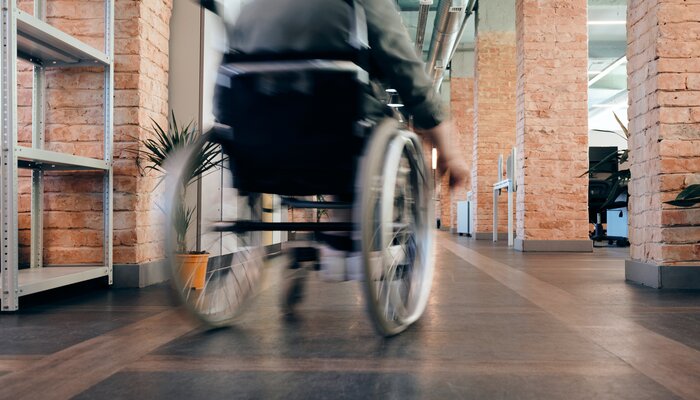The vast world of auto insurance is filled with many terms and policies that confuse consumers. Particularly confusing is understanding the difference between liability insurance and Personal Injury Protection (PIP). These terms play a vital role in how your insurance coverage works, and not understanding them could cost you dearly. So, let's unravel this complexity and make these terms simple!
Understanding Liability
Regarding auto insurance, liability is a fundamental concept that requires clarification. Regarding auto insurance, liability refers to your legal responsibility to cover the costs associated with injuries or damages you cause to others in an accident where you are determined to be at fault.
Your liability insurance is what steps in to handle these costs. Accidents can be an expensive ordeal, with costs soaring swiftly. In such events, liability insurance shields you from personally shouldering these costs, offering essential financial protection.
Types of Liability Coverage
Liability coverage is predominantly categorized into two types: Bodily Injury Liability (BIL) and Property Damage Liability (PDL). BIL kicks in when you are at fault in an accident, covering the other party's medical bills, suffering, and lost wages. In contrast, PDL deals with the costs of repairing or replacing the other party's property damaged due to the accident.
Understanding Personal Injury Protection (PIP)
Now that we have comprehended liability, let's focus on another key concept - Personal Injury Protection. Personal Injury Protection, often abbreviated as PIP, is an extension of car insurance that addresses medical expenses and, in many instances, lost wages regardless of who is at fault in the accident. PIP is your financial shield when you or your passengers are injured in an accident. It ensures your medical bills are handled, providing peace of mind.
How PIP Works
PIP can cover various expenses, from hospital bills and medical expenses to rehabilitation costs. In more severe cases, it can even cater to funeral expenses. Certain PIP policies also compensate for tasks you cannot perform due to injuries, like house cleaning, termed 'loss of services.'
Key Differences between Liability and PIP
With a firm understanding of both concepts, let's examine their distinct differences.
Delineating Coverage Differences
The primary distinguishing factor between liability and PIP insurance lies in their respective coverage scope. Liability insurance, as its name suggests, is designed to protect you from the financial consequences of liability - in other words, the obligation you face when you cause harm to others.
When you're at fault in an accident, liability insurance covers the costs associated with the injuries or damages sustained by the other party. This includes medical expenses, lost wages, and property damage costs, which could cost thousands of dollars.
Conversely, Personal Injury Protection (PIP) is designed to handle personal damages - it insures you, the policyholder, against your potential losses. This type of insurance is unique in that it covers costs irrespective of who is at fault in the accident.
Therefore, even if you cause the accident, your PIP insurance will cover your medical expenses, lost wages, and other related costs up to your policy's limit. This offers a safety net that ensures you don't face catastrophic financial hardship following an accident, regardless of fault.
Evaluating Cost Differences
When examining the cost differences between liability and PIP insurance, it's essential to consider the level of coverage provided by each. PIP insurance generally incurs a higher premium than liability insurance, largely due to its comprehensive coverage.
While liability insurance is designed to protect you from the costs you may be legally obligated to pay to others, PIP goes a step further. It covers your medical expenses and, in many cases, loss of income, regardless of who caused the accident. This additional layer of coverage naturally leads to higher premiums, reflecting the broader range of protection provided by PIP insurance.
Understanding Geographical Considerations
The landscape of auto insurance regulations varies considerably from one location to another. This is an important factor to consider when choosing between liability and PIP insurance. In certain states, the law mandates that drivers possess PIP insurance. These are usually 'no-fault' states, where the concept is that each driver's insurance covers their own injuries or damages, irrespective of who caused the accident.
On the other hand, some states operate under a traditional tort insurance system. Under this system, the driver who is at fault for the accident is responsible for paying the damages. In these states, having liability coverage is typically a legal requirement to protect drivers from the high costs they could face if they're at fault in an accident.
Navigating these geographical variations can be complex, but it's an essential part of understanding your insurance needs and legal responsibilities. It's always advisable to familiarize yourself with your state's specific auto insurance requirements and consider these when deciding on your insurance coverage.
Who is Protected?
Liability insurance primarily shields you from hefty out-of-pocket expenses when you cause damage to others. Conversely, PIP protects you, your passengers, and other authorized vehicle drivers from financial repercussions following an accident.
Understanding the Concept of 'No-fault' Insurance
In the insurance sphere, you'll frequently encounter the term 'no-fault' insurance. This is another term for PIP, which reflects that the coverage applies regardless of who is at fault in the accident.
Choosing Between Liability and PIP
The decision to opt for liability or PIP insurance involves considering several factors.
Important Factors to Consider
When deciding between liability and Personal Injury Protection (PIP) insurance, there are several critical factors you should carefully consider to ensure your decision aligns with your specific needs and circumstances.
-
Financial Stability: Your current financial status plays a significant role in determining the type of coverage that best suits your needs. If you have substantial savings and can afford to pay out-of-pocket costs in case of an accident, you may be comfortable with just liability coverage. However, if you live paycheck to paycheck or have limited savings, PIP can provide a financial safety net, covering your medical costs and lost wages after an accident.
-
Likelihood of an Accident: It's crucial to objectively assess the risk of being involved in an auto accident. Factors such as your driving habits, the condition of your vehicle, the traffic situation in your area, and your health condition (like eyesight or any chronic diseases) could influence this risk.
-
Legal Requirements: As discussed earlier, the insurance regulations vary from state to state. Some states mandate PIP coverage, while others require only liability insurance. Ensure you are well-versed with your state's specific requirements to avoid legal issues down the line.
-
Desired Level of Protection: Finally, consider the level of protection you desire. If you wish to have comprehensive coverage that takes care of your medical expenses regardless of fault, PIP would be an ideal choice. On the other hand, if your primary concern is protecting yourself against liabilities, then liability insurance might suffice.
The Vital Role of an Insurance Agent
In the complex world of auto insurance, the guidance of a licensed insurance agent can be invaluable. An insurance agent's primary role is to assist you in navigating the insurance landscape, enabling you to make an informed decision that caters to your unique circumstances.
An experienced agent can provide expert advice tailored to your situation, taking into account factors like your financial stability, risk assessment, legal obligations, and desired level of protection. They can elucidate the intricacies of both liability and PIP insurance, helping you to comprehend their respective benefits and limitations.
Furthermore, an insurance agent can facilitate the process of purchasing coverage, ensuring that all paperwork is accurately completed and submitted on time. With their help, you can secure an insurance policy that offers optimal protection for your needs and complies with all relevant legal requirements.
Remember, choosing an insurance policy is not a one-size-fits-all scenario. Every driver's situation is unique, and an informed decision requires a comprehensive understanding of your own circumstances and needs.
Benefits and Limitations of Liability and PIP
Both types of insurance have their own benefits and limitations.
Benefits
Liability coverage prevents you from paying large sums of money out of pocket if you're at fault in an accident. PIP, on the other hand, ensures that your medical expenses are covered, regardless of who caused the accident.
Limitations
While liability insurance covers the damages you cause to others, it doesn't cover your own personal damages or medical bills. PIP, although providing extensive coverage, may not cover all costs in the event of a severe accident where you're at fault. This could leave you to deal with the remainder of the bill.
FAQs
1. What's the difference between medical payments coverage and Personal Injury Protection?
While both cover medical expenses, PIP often includes additional costs like lost wages and rehabilitation costs.
2. If I have comprehensive health insurance, do I still need PIP?
Yes, as PIP can cover several costs that your health insurance might not cover, like lost wages or funeral expenses.
3. Is having liability coverage compulsory?
In most states, having a certain level of liability coverage is mandatory, although the required amount can vary.
4. Can I opt for both Liability and PIP coverages?
Absolutely! Many drivers choose to have both to ensure comprehensive protection.
5. Which insurance costs more, liability or PIP?
Generally, PIP tends to be more expensive due to the broad coverage it offers.
Conclusion
Understanding the differences between liability and personal injury protection is essential in making informed decisions regarding auto insurance coverage. While the concepts might seem complex initially, they aim to ensure your peace of mind. The right coverage can protect you from potential financial turmoil and assure that you and your loved ones are taken care of in the event of an accident.
Learn more about how much percentage lawyers take for personal injury cases by reading through our blogs at Disability Help.





